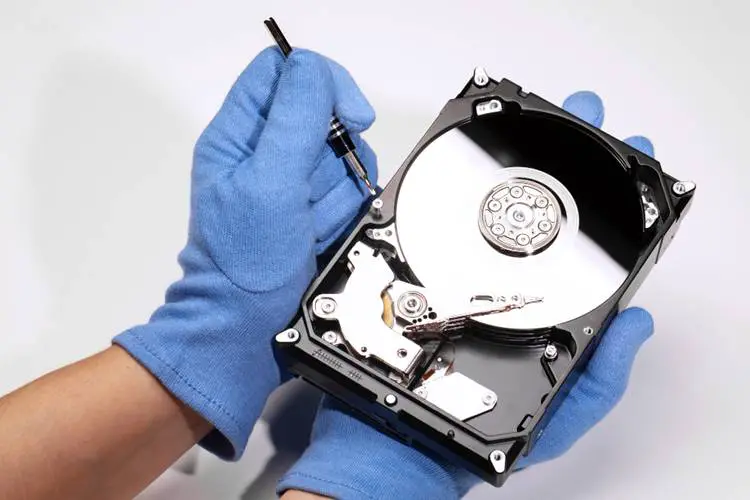Dealing with a corrupted hard drive can be incredibly frustrating. However, fear not! In this comprehensive guide, we will walk you through the process of fixing a corrupted hard drive. Our step-by-step instructions will help you learn how to fix a corrupted hard drive and recover your valuable data.
1. Understanding the Common Causes of Hard Drive Corruption
When it comes to hard drive corruption, various factors can come into play. Understanding the causes is crucial for effective troubleshooting. Let’s explore the common reasons behind hard drive corruption:
- System crashes: Abrupt power outages or improper shutdowns can result in file system errors and subsequent hard drive corruption.
- Power failures: Voltage fluctuations or sudden electrical surges can lead to data corruption and damage the hard drive.
- Malware infections: Viruses, trojans, and other malicious software can infiltrate your system, causing hard drive corruption.
- Physical damage: Accidental drops, exposure to extreme temperatures, or liquid spills can physically damage the hard drive, leading to corruption.
2. Assessing the Severity of Hard Drive Corruption
Before diving into fixes, it is essential to evaluate the extent of the hard drive corruption. Look out for the following signs indicating possible corruption:
- Error messages: Pay close attention to any error messages displayed during system startup or when accessing files. Example: “Drive not accessible,” “File system corrupted,” or “Disk boot failure.”
- Unusual noises: Unusual sounds emanating from the hard drive, such as grinding or clicking noises, may indicate mechanical issues requiring immediate attention. Example: A repetitive clicking sound every few seconds.
To conduct a thorough assessment, utilize built-in system diagnostics tools or employ third-party software designed specifically for hard drive health checks.
3. DIY Fixes for Software-Based Hard Drive Corruption
Software-related corruption often has potential DIY solutions. Follow these instructions to address logical errors and fix your corrupted hard drive caused by software-related issues:
- Backup your data:
- Before attempting any fixes, safeguard your important files by creating a backup to prevent potential data loss.
- Utilize built-in error-checking tools:
- For Windows users: Open Command Prompt as an administrator and enter “chkdsk /f C:” (replace C: with the drive letter of the corrupted hard drive).
- For Mac users: Utilize Disk Utility by navigating to Applications > Utilities > Disk Utility. Select the corrupted drive and click on “First Aid” or “Repair Disk.”
- Explore third-party software options:
- Windows users may consider utilizing tools such as Check Disk (chkdsk), EaseUS Data Recovery Wizard, or MiniTool Power Data Recovery.
- Mac users can opt for reliable options like Disk Utility, DiskWarrior, or Data Rescue.
4. Advanced Solutions for Physical Hard Drive Corruption
Physical hard drive corruption usually necessitates professional assistance. However, there are some advanced solutions you can consider to fix the corrupted hard drive before seeking expert help:
- Replace the controller board: If corruption stems from a faulty controller board, replacing it with an identical one could resolve the issue. Note: This process requires technical expertise and access to a matching controller board.
- Data recovery services: In cases of severe physical damage, consulting professional data recovery services equipped with specialized tools and cleanroom facilities is advisable. Example: DriveSavers, Ontrack, or Secure Data Recovery.
- Component swapping: This option should only be attempted as a last resort by experienced individuals. It involves transplanting internal components from a donor drive to gain access to your data.
5. Implementing Preventive Measures to Avoid Future Hard Drive Corruption
Taking proactive steps to protect your hard drive is essential for preventing future corruption. Consider the following preventive measures:
- Utilize surge protectors: Safeguard your system from voltage fluctuations and power surges by using surge protectors or uninterruptible power supplies (UPS).
- Ensure a stable power supply: Maintain a stable power supply and consider using a UPS to prevent sudden power loss.
- Regularly back up your data: Protect your important files by creating regular backups on external storage devices or utilizing cloud services.
- Employ reliable antivirus software: Install reputable antivirus software and keep it up to date to defend against malware and viruses.
- Practice safe browsing habits: Avoid visiting suspicious websites and downloading files from untrusted sources to minimize the risk of malware infections.
Read also: How to Retrieve Deleted Files from Hard Drive
Conclusion
By following the step-by-step instructions provided in this comprehensive guide, you now have the knowledge and tools to effectively fix a corrupted hard drive and recover your valuable data. Remember to identify the cause of the corruption, attempt software fixes for logical errors, and seek professional assistance for physical damage. Implement preventive measures to maintain the health of your hard drive and regularly back up your important files.
Please note that each case of hard drive corruption is unique, and not all issues can be resolved through DIY methods. If you are uncertain or uncomfortable with the process, it is recommended to consult a professional for assistance.

